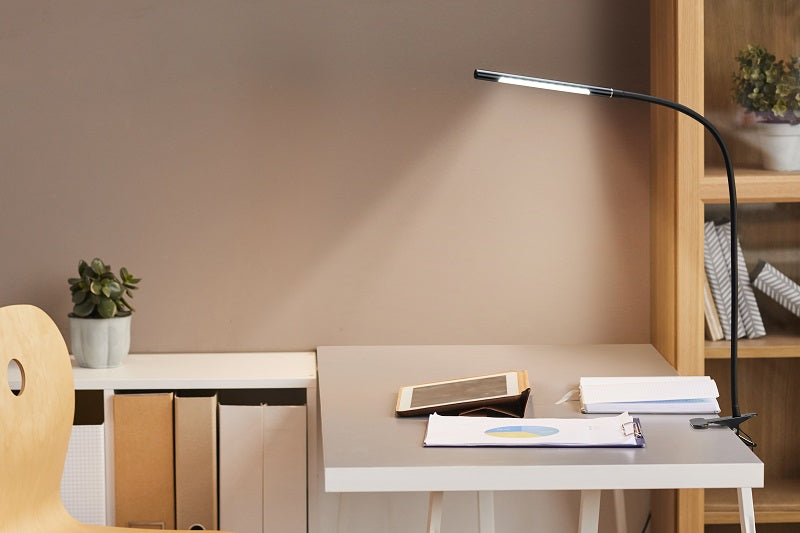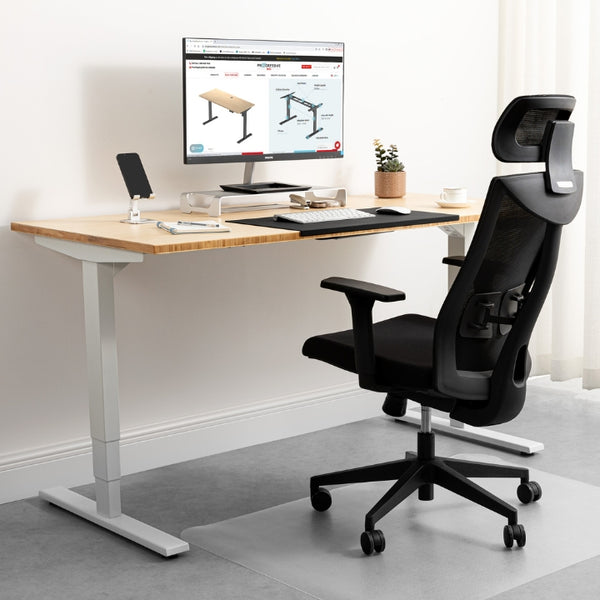In the world of ergonomics, much is said about the right chair, the perfect desk height, and the optimal screen placement. However, one critical aspect often overlooked is workspace lighting. Proper lighting is not just about illuminating your space; it's about enhancing productivity, protecting your eye health, and creating an environment that fosters focus and efficiency. This comprehensive guide dives into the essentials of desk lighting ergonomics, exploring ergonomic lighting solutions and adjustable desk lighting designed to complement your standing desk setup.
The Importance of Proper Desk Lighting
Impact on Productivity
First and foremost, adequate lighting is essential for maintaining focus and energy throughout the workday. Studies have shown that well-lit workspaces can significantly enhance productivity by reducing the need for cognitive strain to see and process information. Natural light, in particular, has been linked to improved mood and energy, which are crucial for maintaining high productivity levels over extended periods.
Eye Health Considerations
Proper desk lighting goes beyond productivity; it's also about protecting your most valuable asset—your eyes. Insufficient or harsh lighting can lead to eye strain, blurred vision, and headaches, impeding your ability to work effectively. By understanding and implementing principles of desk lighting ergonomics, you can create a lighting setup that supports your eye health, reducing the risk of discomfort and long-term eye issues.

Selecting the Right Lighting for Your Standing Desk
Navigating the world of ergonomic lamps and adjustable and task lighting options can be daunting. The goal is to find lighting solutions that provide sufficient brightness without causing glare on your monitor, allow flexibility, and complement the aesthetics of your workspace.
Types of Ergonomic Lamps
When it comes to selecting an ergonomic lamp, consider options that offer adjustable brightness and color temperature. LED lamps are particularly beneficial due to their energy efficiency and the ability to adjust to mimic natural daylight closely. Flexibility in the lamp's design is also crucial; look for models that allow you to adjust the light's direction and height, catering to the dynamic nature of standing desks.

Adjustable and Task Lighting Options
Adjustable desk lighting is particularly beneficial for standing desk users. These lights can be repositioned easily, ensuring that you have consistent lighting regardless of whether you're sitting or standing. Task lighting should be adjustable in both height and angle to cater to different tasks and times of the day.
Integrating Lighting with Your Workspace Ergonomics
Creating an ergonomic workspace involves more than just the right furniture; it includes lighting setup tips and combining lighting with other ergonomic accessories. The placement of your lighting, its interaction with natural light sources, and how it works with your overall workspace ergonomics are crucial considerations.

Lighting Setup Tips
Achieving the perfect lighting setup involves more than just placing a lamp on your desk. Consider the lamp's placement in relation to your monitor to avoid screen glare. Integrating natural light wherever possible can also enhance your workspace but be mindful of direct sunlight that can cause glare at certain times of the day. Utilizing blinds or curtains can help manage natural light effectively.
Combining Lighting with Other Ergonomic Accessories
An ergonomic workspace is a sum of its parts, with each element playing a vital role in supporting your health and productivity. Combine your lighting solutions with other ergonomic accessories, such as monitor arms and risers, to ensure your lighting enhances rather than detracts from your workspace. The goal is to create a harmonious environment where lighting supports every aspect of your ergonomic setup.
FAQs
How does lighting affect productivity at a standing desk?
Good lighting can significantly enhance productivity by reducing eye strain and fatigue, improving mood and energy levels, and minimizing the risk of headaches, allowing for longer and more effective work periods at your standing desk.
What type of lighting is best for a standing desk setup?
The best lighting for a standing desk setup is a combination of natural light and adjustable task lighting that allows for control over brightness and direction, ensuring your workspace is evenly lit without glare or shadows.
How can I adjust my desk lighting to reduce eye strain?
To reduce eye strain, use a desk lamp with adjustable brightness and color temperature settings. Position the lamp to the side of your monitor to avoid glare and ensure the light covers your entire workspace evenly. Opt for lighting that mimics natural daylight as closely as possible.
A Final Word
Mastering lighting in your standing desk setup is crucial for maintaining productivity and ensuring a comfortable work environment. By selecting the right ergonomic lighting solutions and integrating them effectively into your workspace, you can create an area that not only looks great but also promotes health and efficiency! Check out Progressive Desk page to explore a range of ergonomic office chairs, standing desks, and accessories designed to optimize your ergonomic workspace, and elevate your work experience to new heights!









